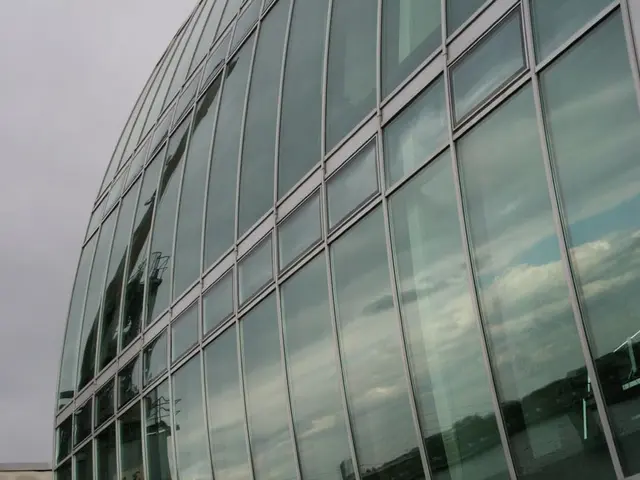Rapidly Evolving, Friendly Robots
Japan is leading the charge in the global robotics industry, with significant advancements shaping current applications and future prospects across various sectors. The country's robotics ecosystem is defined by three main areas: industrial, assistive, and humanoid robots.
In the realm of industrial robotics, Japan boasts one of the highest robot-to-worker ratios worldwide, with more than 400 industrial robots per 10,000 manufacturing workers as of 2025. Companies like Fanuc, Yaskawa Electric, Mitsubishi Electric, and Omron are at the forefront, pioneering precision robotics that excel in automotive and electronics assembly, where accuracy down to 0.01 mm is critical. The industrial robotics market in Japan is projected to grow strongly from 2025 through 2032 due to factors including worker shortages, supply chain demands, and the integration of AI and Industry 5.0 technologies, leading to smarter factories with improved human-robot collaboration and digital twin systems.
In assistive robotics, Japan faces demographic challenges from its rapidly aging population (expected to be one-third elderly by 2050). To address workforce shortages in elder care, companion and performance robots have become common in care homes, assisting with tasks like health monitoring and providing entertainment such as piano playing. Although budget constraints limit cutting-edge AI integration in some facilities, robotics support remains essential to compensate for declining human care workers. Additionally, robotics are expanding into clean energy infrastructure, with pioneering examples such as drones equipped with mechanical arms to inspect and maintain offshore wind turbines, enhancing operational efficiency and reducing costs.
Regarding humanoid robots, Japan is spearheading the transition from traditional industrial/service robots to advanced models called "Humanoid Version 0.5" (2025-2028), featuring wheeled mobility and single/dual-arm grippers optimized for logistics, transport, and simple manipulation tasks. These robots offer modular, cost-efficient designs suitable for manufacturing, warehousing, and service settings. Looking beyond 2029, technological advances and economies of scale are expected to enable mass production of "Humanoid Version 1.0" robots with bipedal mobility and dexterous dual arms. These humanoid robots will be capable of complex object manipulation, effective human-robot collaboration, and multi-sector applications including healthcare, home services, education, and entertainment, integrating AI for autonomy and environmental adaptability.
In public spaces, Japan has introduced humanoid receptionists, robotic servers, and guide robots in transportation hubs, highlighting advancements in robots designed for emotional and social interaction, such as Pepper and Aibo, which are widely used in schools, elder care, and therapy.
Japan's economy has benefited from the advancements in robot technology, with robots playing a significant role in the country's industrial growth. The familiarity with humanoid robots from Japanese pop culture has led people to feel closer to robots than to simpler machines. An exhibition curated by Shunji Yamanaka showcased humanoid robots between 2018 - 2019. Shunji Yamanaka, a Japanese industrial designer known for his work in engineering and art, including the design of humanoid robots, is a significant figure in this field.
Japan continues to advance in the development of humanoid robots, with high hopes for exoskeleton suits for medical and nursing care applications, like Cyberdyne's HAL, which is designed to assist elderly or handicapped people by augmenting, restoring, enhancing, or supporting physical abilities. There is growing compatibility between industrial robots and human operators, as demonstrated by Denso's VS-050_H2O2 arm robot, designed to be safe and hygienic to work in close proximity to people.
Robots made in Japan, such as Fanuc's Robodrill, are known for their precision in machining metal shells for smartphones and similar applications. The performance of robots has made significant leaps, particularly from the 1970s, during Japan's period of rapid economic growth. Shunji Yamanaka was involved in the development of NTT DoCoMo's Osaifu-Keitai mobile payment system and the automated railway ticket barriers for the Suica system, demonstrating his significant work in human-machine interfacing.
In summary, Japan’s robotics ecosystem is defined by industrial robots dominating manufacturing with precision, AI integration, and customization driving productivity; assistive robots addressing aging population needs and supporting infrastructure maintenance, especially in clean energy; and humanoid robots evolving from specialized wheeled platforms to future bipedal models enabling versatile, autonomous daily-life applications. These trends position Japan to maintain technological leadership, with significant growth and societal impact expected through 2030 and beyond.
Read also:
- Events of August 19 unraveled on that particular day.
- IM Motors reveals extended-range powertrain akin to installing an internal combustion engine in a Tesla Model Y
- Ford Embraces Silicon Valley Approach, Introducing Affordable Mid-Sized Truck and Shared Platform
- Future Outlook for Tesla in 2024: Modest Expansion in Electric Vehicle Sales, Anticipated Surge in Self-Driving Stock








